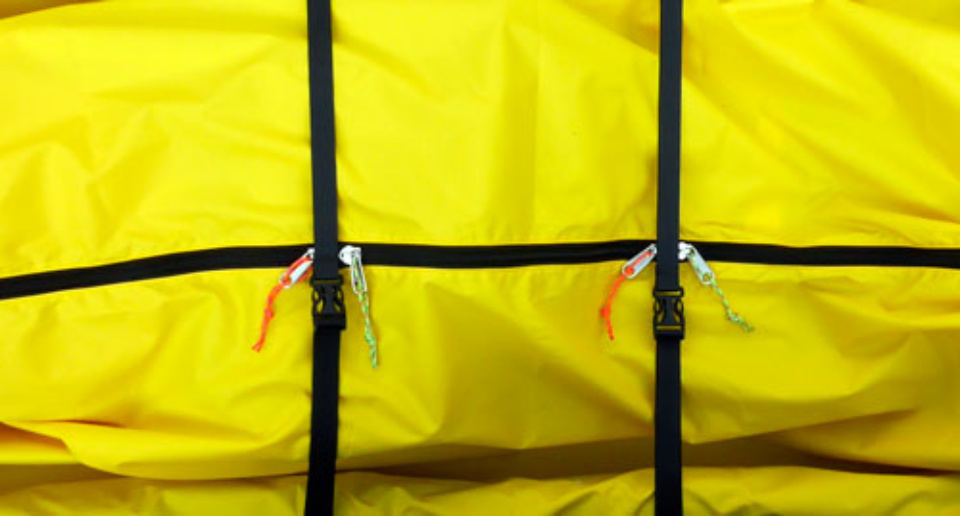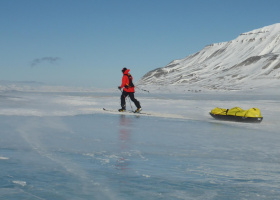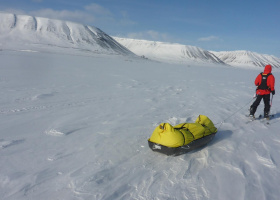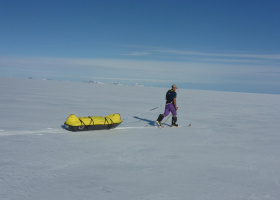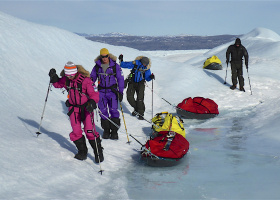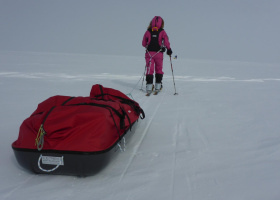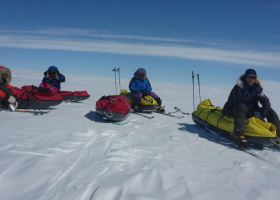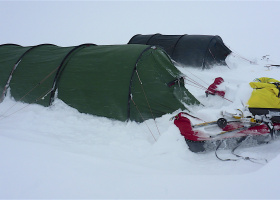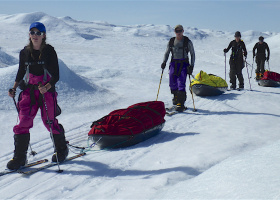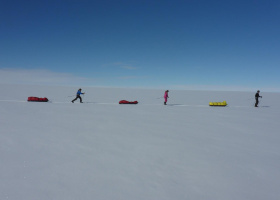POLYNYA Sled
Super light, super strong, super glide.
Polynya is the choice of sled for Antarctica and Greenland, and any other land ice or backcountry expedition. While maintaining it's robustness for expedition conditions, Polynya is lighter than our Nilas sled yet with similar storage volume for long expeditions.
- Weight-minimised for icecap expeditions
- Specially-formulated polyethylene
- Expedition volume, holds everything for a full-length mission
- Nestable
- Excellent flotation on water and in soft snow
- Removable Poly (red or fluoro yellow) or Nylon (orange)cover, stitched on with Spectra cord.
Colour combinations
 |
Also available, Sled Travel Bag






Share this
Polyethylene construction
Polynya is made from a specially-formulated polyethylene giving extreme-cold tolerance, high impact resistance and superior glide. Polyethylene also boasts what the Inuit knew a century ago, sleds need flexibility, not rigidity - it's why they jointed their dog sledges with hide thonging instead of screws or dowels. Watch Polynya as it glides through a sastrugi field, flexing and warping to the shape of the obstacles . No cracks, no crimps, no scrapes. Just smooth, slippery plastic.

Expedition size
Polynya is a full expedition-size sled with volume enough for a major unsupported expedition. It's wider than traditional sleds which gives it not only more packing space but extra stability in sastrugi and when kiting at speed. Sled capsizes are frustrating, time-consuming and hard on your sled cover and contents. Don't tolerate them, eliminate them. Polynya' deck-cover extends to over 42cm in usable height, providing space for more than 100 days food and fuel.
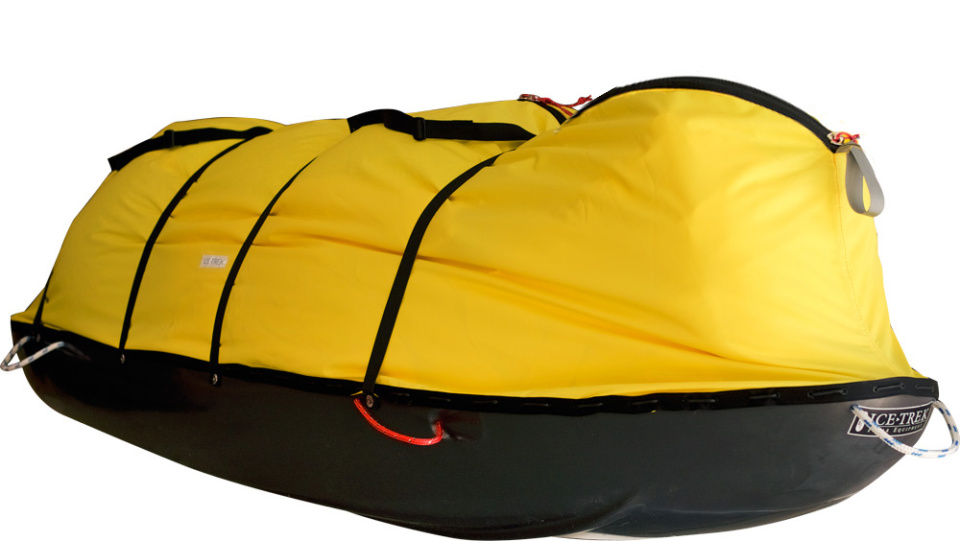
Optimised strength and weight
Polynya is a cut-down version of our Nilas model. Because icecaps are generally kinder to sleds than the Arctic Ocean we have kept Polynya's weight to a minimum by removing the deck and coaming and doubling the tow loops as handles. This makes Polynya less rigid up top but don't be alarmed by its flexibility; you don't need cockpit stiffness if you're not climbing all over your sled like you might on the Arctic Ocean. Hull thickness remains the same as Nilas so you can be assured of supreme robustness in extreme cold and on hard ice.
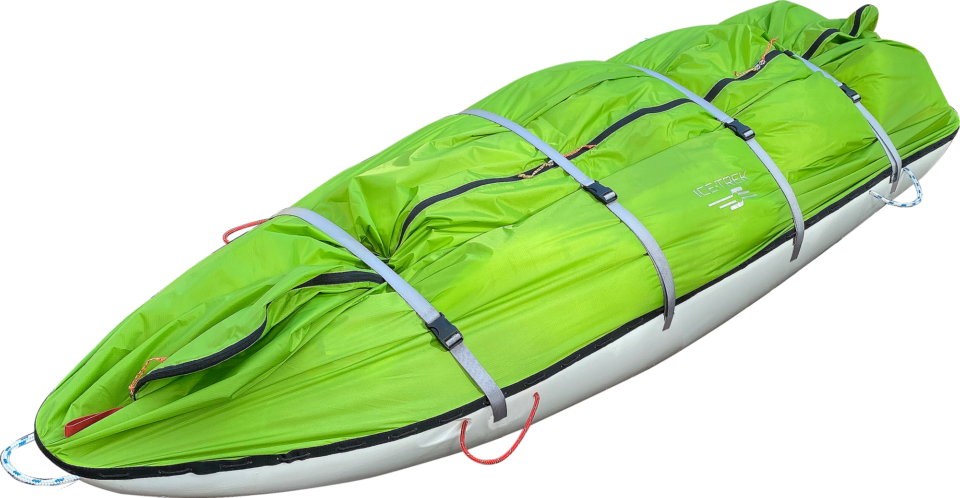
Low-profile runners, optimal glide
High-profile runners are to sleds what worn bearings are to a bike. They slow you down, particularly in anything other than bare ice. Low-profile runners minimise the surface area, and the friction, and maximise flotation in deeper snow, keeping your sled high and dry. Together with the bull-nose bow, low profile runners allow the sled to find it's own way through sastrugi, reducing the stress on your sled, body and mind.

Replaceable cover
Icetrek sleds are designed to withstand the abuse of multiple expeditions. But the cover never fares so well - they can become torn, abraded and mouldy. Traditional sled covers are riveted on however Polynya's cover is hand stitched onto the sled rim with durable Spectra cord. Adding sponsor branding to your sled cover couldn't be easier, simply remove the cover to sew on badges and banners. The cover is made of high-grade poly, tape-sealed and the 6-way #10 zipper with long extensions gives you instant and easy access.
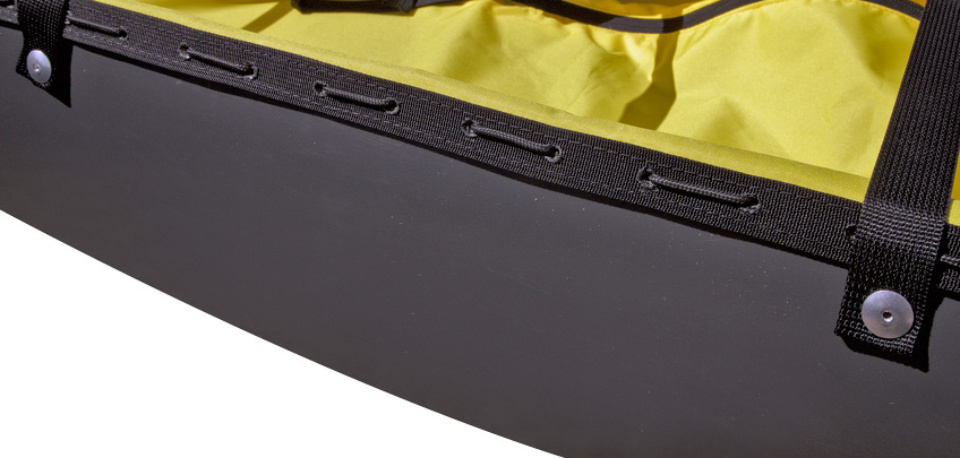
Replaceable fittings
Icetrek sleds are equipped with premium fittings. High-quality cover with YKK zipper, Spectra-cord tow loops, double-braid rope handles, compressions straps with cold-resistant nylon buckles. The cover, handles and loops are removable and replaceable in the field - no tools required - making running repairs and adaptations a breeze. The tow loops double up as handles to reduce weight. Icetrek sleds are the result of decades of polar expeditioning - we know what works and what doesn't.
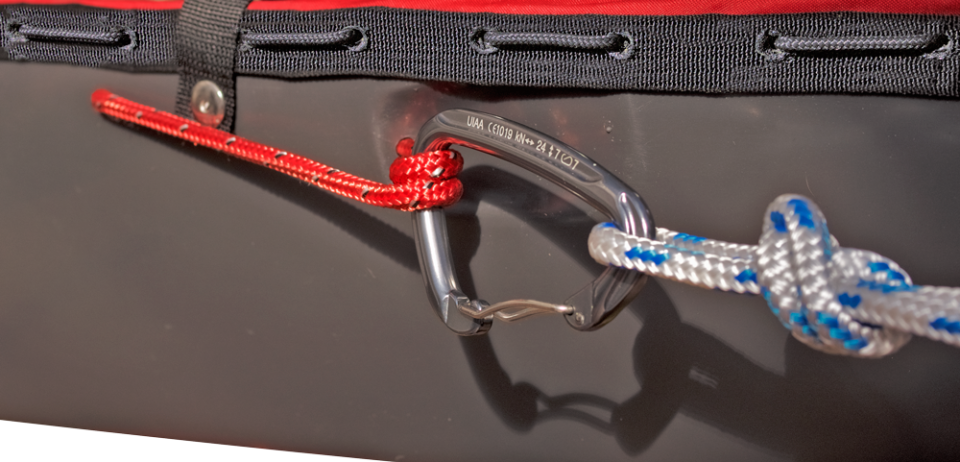
Nestable and stackable
For optimized transportation and storage, Polynya is nestable and stackable.

Optional Travel Bag
Our optional sled travel bags are made from heavy-duty canvas to protect your sled from the rigours of airline travel.
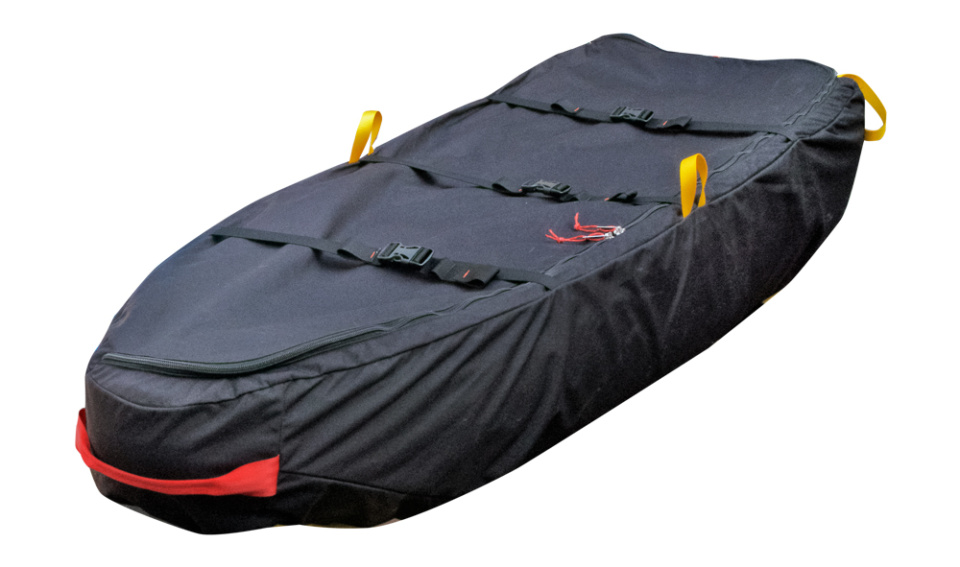
When viewing our specifications we encourage you to keep in mind factors that are of greater importance than weight. The glide coefficient of our plastic is a great deal higher than other sled materials, meaning it glides much more efficiently, which vastly offsets the slight increase in weight indicated in our sled specs. Also, our low profile runners are designed to minimise surface area on snow while the flat-bottomed hull promotes flotation. Furthermore the round-edged profile of our runners facilitate ease of turning through convoluted terrain. Surface temperature is one of the most inhibiting glide factors. Super-chilled snow crystals become very sharp and will retard the glide of any material.
Weight: 8.8kg / 19.4lb, including cover and all fittings (with nylon cover 8.6kg)
Shipping weight: 13kg / 28.6lb
Boxed shipping dimensions: 220 x 72 x 28cm / 87 x 29 x 12"
Sled Material: Polyethylene
Volume, without cover: 198 litres / 52.3 US gallon
Volume, with cover: 688 litres / 178.5 US gallon
Length: 210cm / 82.5"
Beam: 68cm / 27"
Average depth, without cover: 25cm / 9.8"
Buoyancy - maximum weight: 198kg / 436.5lb
Cover material: 300 Poly or 70D Ripstop Nylon
Tow loops: 6mm / 0.23" Spectra
Handles: 8mm / 0.31" Double Braid Yacht Rope
Zipper: YKK #10
Compression Straps: 25mm premium webbing
Buckles: National Moldings 25mm side-release
Made in: Australia
Connecting to the tow loop
The tow loop is your link between the sled and your traces (hauling lines). It's made of 5mm Spectra so it won't break and it's long enough to use in a number of configurations. Simple knots hold it in place so it's easy to remove and replace and it also secures the bulkhead in place.

Directly
Flexible traces, usually made from rope, are ideal in most hauling situations. They facilitate freer movement and allow the load to be equalized more efficiently at your harness. A direct connection to the tow loop can be achieved using a larks head in the tow loop and a stopper knot on the trace. This technique would be used during expeditions where you never need to diconnect the traces from the sled such as a Greenland traverse or South Pole expedition.

Indirectly
In situations where you want to disconnect the traces from the sled, such as a North Pole expedition where the rope can be used for ferrying across open water, connect to the tow loop with a karabiner. Using a double bend in the tow loop, and the trace, reduces friction and maximises longevity of your ropes.
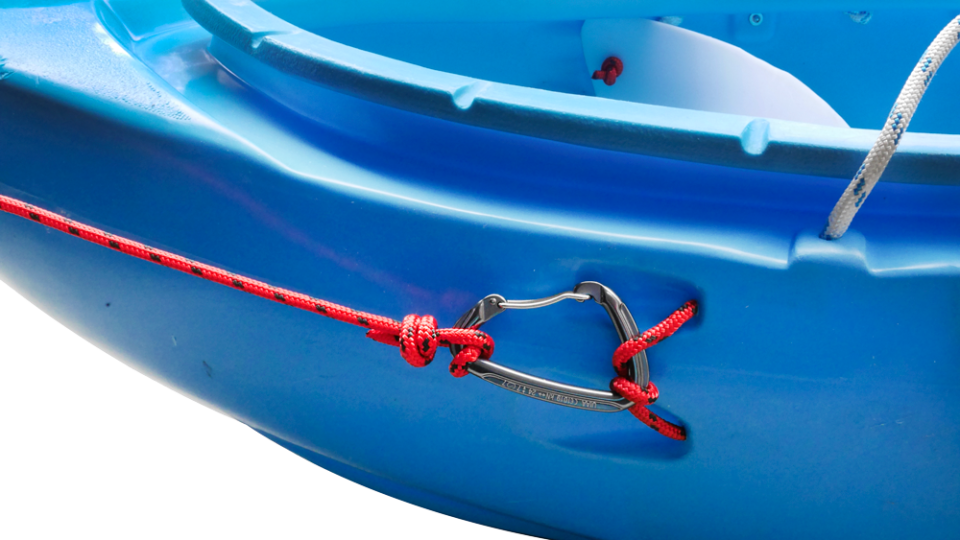
Solid traces
In some situations such as kiting, long downhills or rescue, solid traces, made from aluminium rod or conduit, are preferable. The sled follows your line more closely and reacts more precisely to your impetus. To reduce the amount of play at the tow loop, add a third bend or shorten the tow loop at the knots on the inside of the sled.
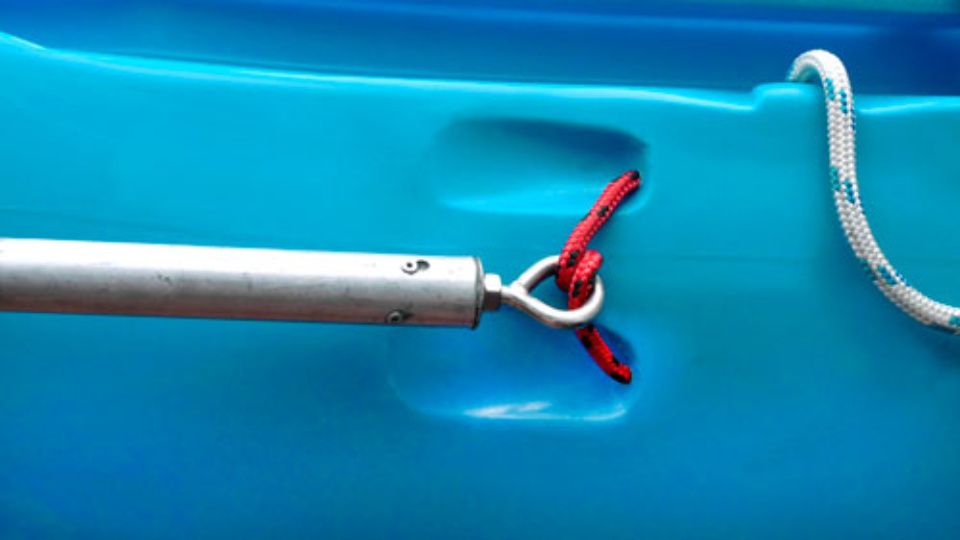
Looped compression straps
The four compression straps on your sled can be joined together to form a continuous loop. This makes cinching down your cover quicker and easier and deals with those ends that often drag in the snow. This technique is more suited to icecap travel. Use the supplied tri-glide buckles to join the ends and adjust the loop length as preferred.
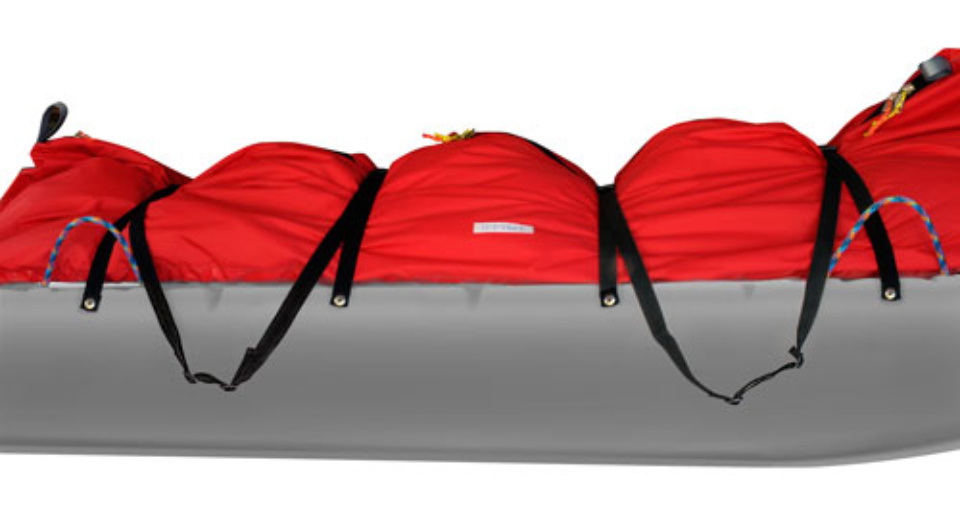
Open-ended compression straps
If you will be rafting two sleds together, for crossing leads on the Arctic Ocean or for river travel, then it's best to keep the strap ends loose. It's much easier and faster cross-linking the sleds with the loose straps and they won't get hooked onto things that might impede your progress. Use the supplied tri-glide buckles as a stopper and be sure to double back so it doesn't slip off.
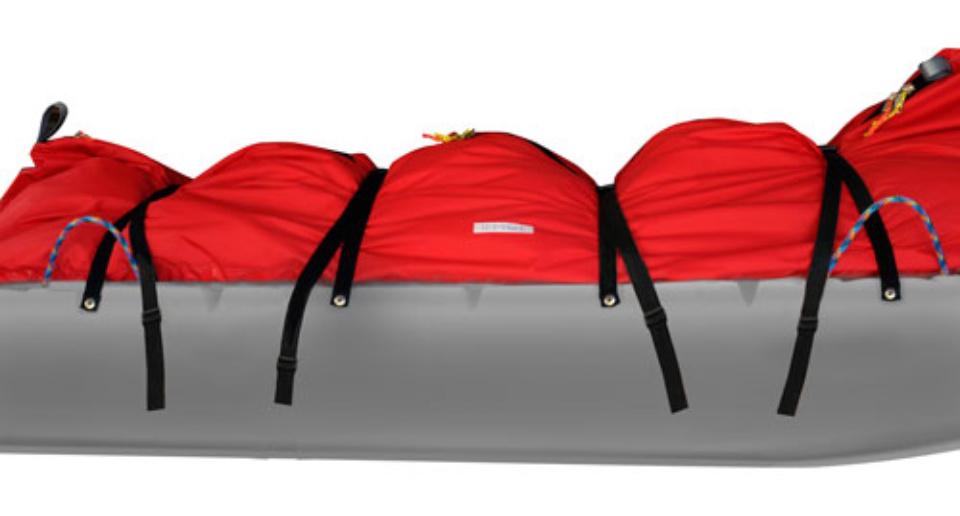
Zip sliders
We have added multiple sliders to our zipper to give you access to all compartments of your sled without unclipping the straps. Keep handy things at the front (snacks, thermos, warm jacket, goggles), changes of head and handwear in the next compartment, and so on. Each slider has a mitten-friendly extension and they're colour-coded, one colour slides forward, the other colour back.
